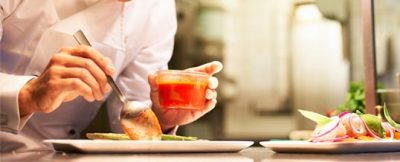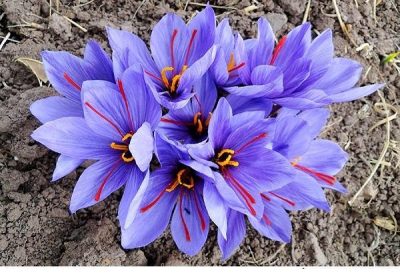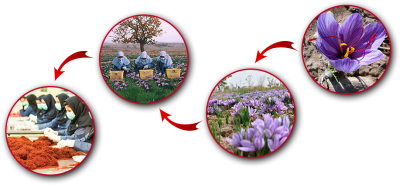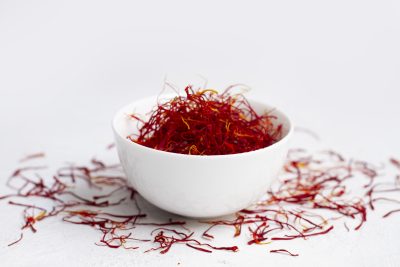In foods, Saffron is used as a spice, yellow food coloring and as a flavoring agent. In manufacturing, saffron extracts are used as fragrance in perfumes and as a dye for cloth. Saffron’s aroma is often described by connoisseurs as reminiscent of metallic honey with grassy or hay-like notes, while its taste has also been noted as hay-like and sweet. Saffron also has contributes as luminous yellow-orange coloring to foods. Saffron is widely used in European, Arab, South and Central Asian, Persian and Turkish cuisines.
Confectioneries and liquors also often include saffron. Saffron has a long medicinal history as part of traditional healing, modern medicine has also discovered saffron as having ant carcinogenic(cancer suppressing) , anti mutagenic(mutation preventing), immunomodulating and antioxidant-like properties. Saffron stigmas , and even petals, have been said to be helpful for depression. Early studies show that saffron may protect the eyes from the direct effects of bright light and retinal stress apart from slowing down macular degeneration and retinitis Pigmentosa. Saffron is also used as an aphrodisiac.

saffron is a red gold
About Saffron

saffron flower
Ancient Persians cultivated Persian saffron by the 10th century BC, in khorasan which is located in north-east of Iran. Most of the World’s saffron will provide from Iran which is the world capital of saffron. Iran provides 97% of high- quality saffron production, exports saffron to worldwide.
Saffron is the dried stigmas of the saffron crocus flower. the crocuses are grown through the spring & summer for the late autumn harvest when the flowers are handpicked(mechanic harvesting would destroy them), then dried and packed.
To produce 1 gram of top quality saffron takes 160 flowers. Each plant has up to 4 flowers and each flower has 3 stigmas. The stigma is the end point of a flowers ‘style’ which is a tube that contains the pollen.
The style is picked and the stigma’s are cut off. Each stigma is around an inch long(25-33mm) . The style is yellow and the lower half of the stigma will be Orange becoming yellow as it meets the style. Top quality saffron will be cut well above the point where the stigma starts to become orange. Saffron grading is done via labratory measurement of crocin (color), picrocrocin(taste), and safranal(fragrance) content. Grading standards are set by the ISO(International Organization for .Standardization)

The stages of saffron production
Identifying Quality Saffron
Quality saffron consists of long ,bright red stigmas. In the beginning of the season, saffron has the desired coloring strength, taste and bitterness, As the days pass, gradually the color and taste of saffron decrease and its fragrance and aroma increase. By lapse of time, the color of saffron becomes dark and the filaments become dry and fragile in appearance. The easiest method to recognized pure saffron is to add it to some water. The pure and real saffron will make the water yellow but unreal saffron makes it orange or red. We suggest hot water for test.

high quality saffron
Types of saffron
Negin : This kind of saffron has the highest coloring power(higher than 250 usp) among the other kinds and its volume is higher , too.

Negin Saffron
All red( sargol in Persian) : This kind of saffron is similar to coupe and it is derived from bunch saffron , i.e . The white or yellow arts of saffron threads are cut by scissors and then using statics electricity they are separated from the red parts. The remaining parts are completely red and they are really pure and without style. This kind of .saffron has very high coloring power(240 usp or higher)
you can buy sargol saffron in Oyum shop right now!

sargol saffron
Poushal: This kind of saffron contains filaments which have 2 or 3 mm style. Its coloring power is about 220 usp.

poushal saffron
Bunch(Dastehi in Persian) : This kind of saffron Consists of both, style and red colored stigma.It is also called Red & White in which the red part is about 70% to 75% and the style is about 25% and 30%.According to Iran’s standard, it is called filament 4%.

Bounch of Saffron
